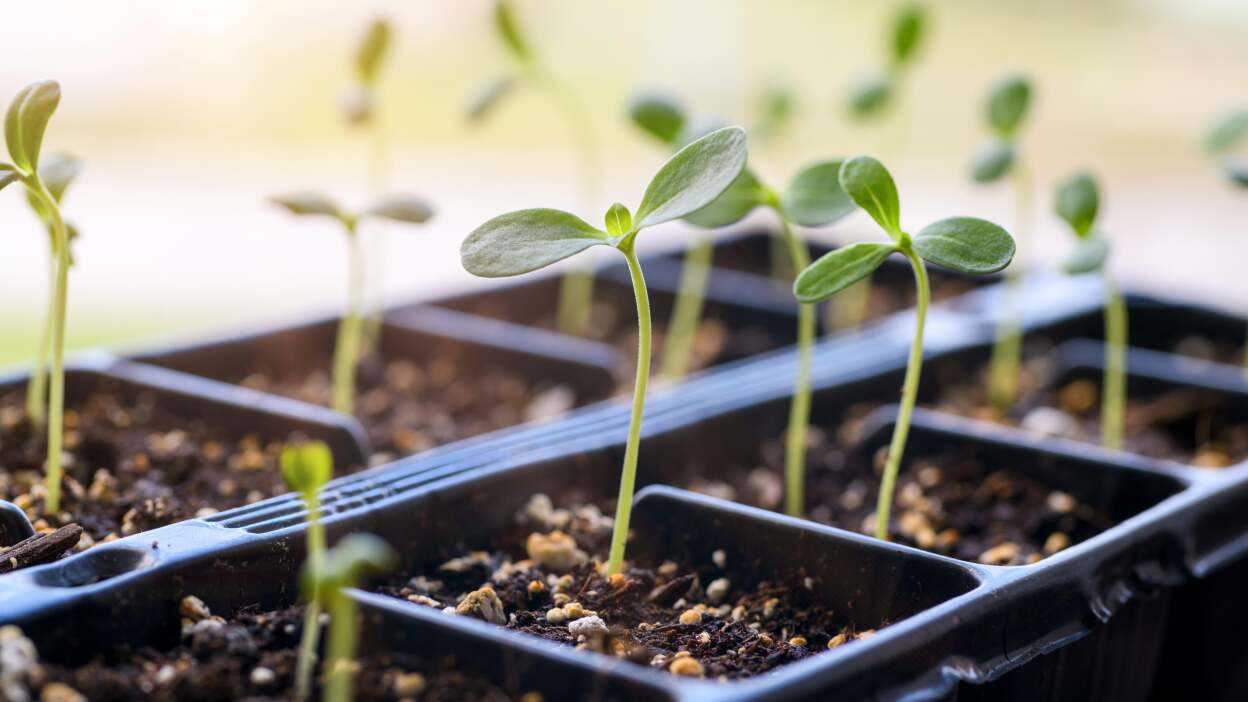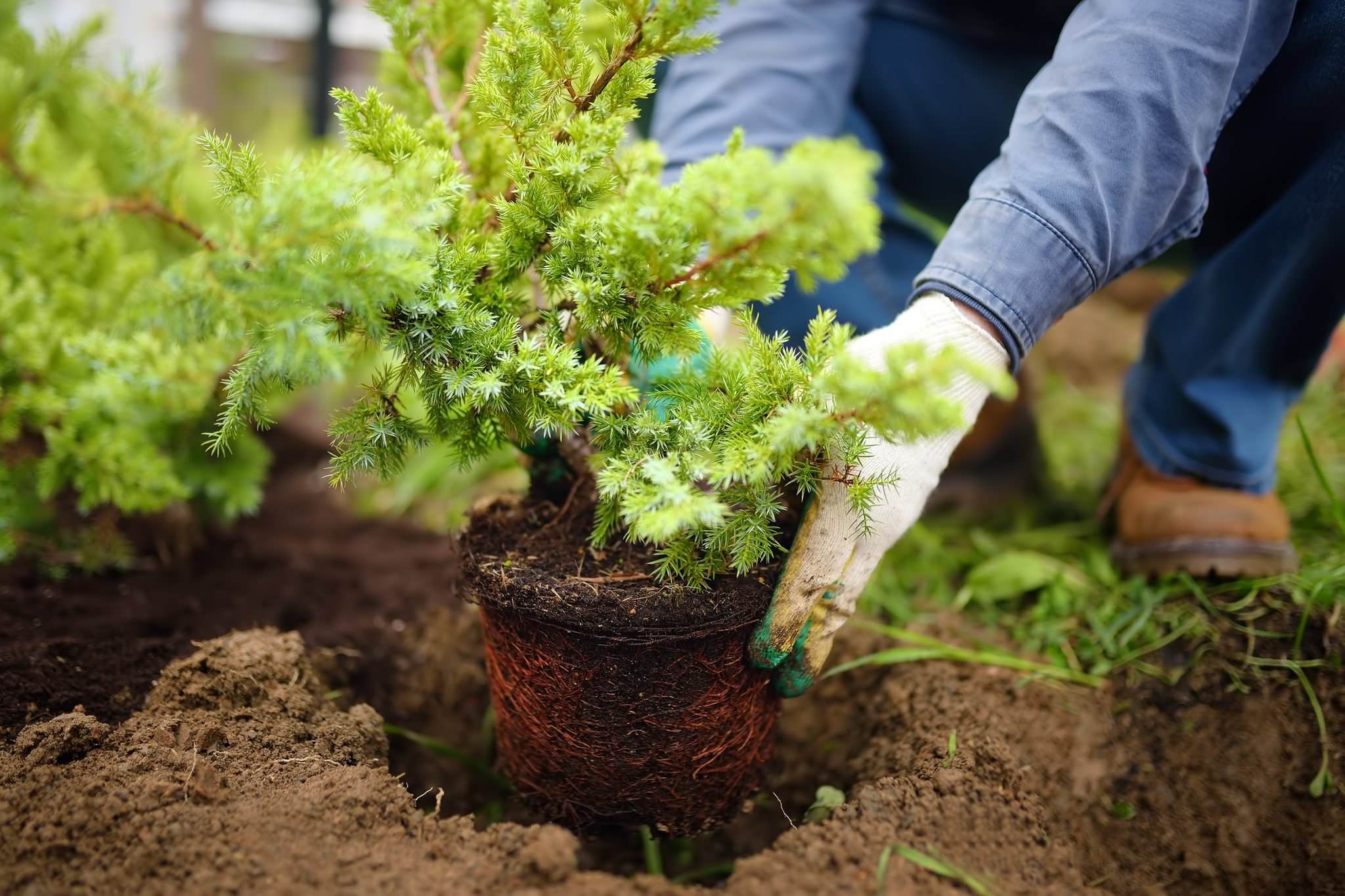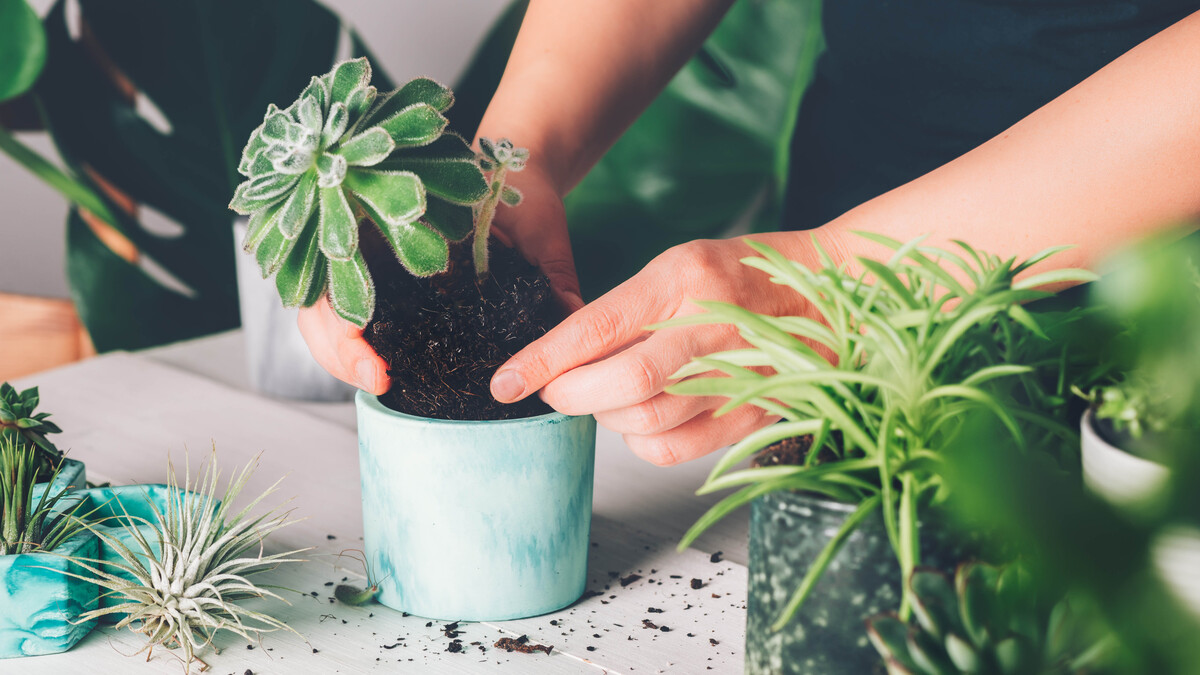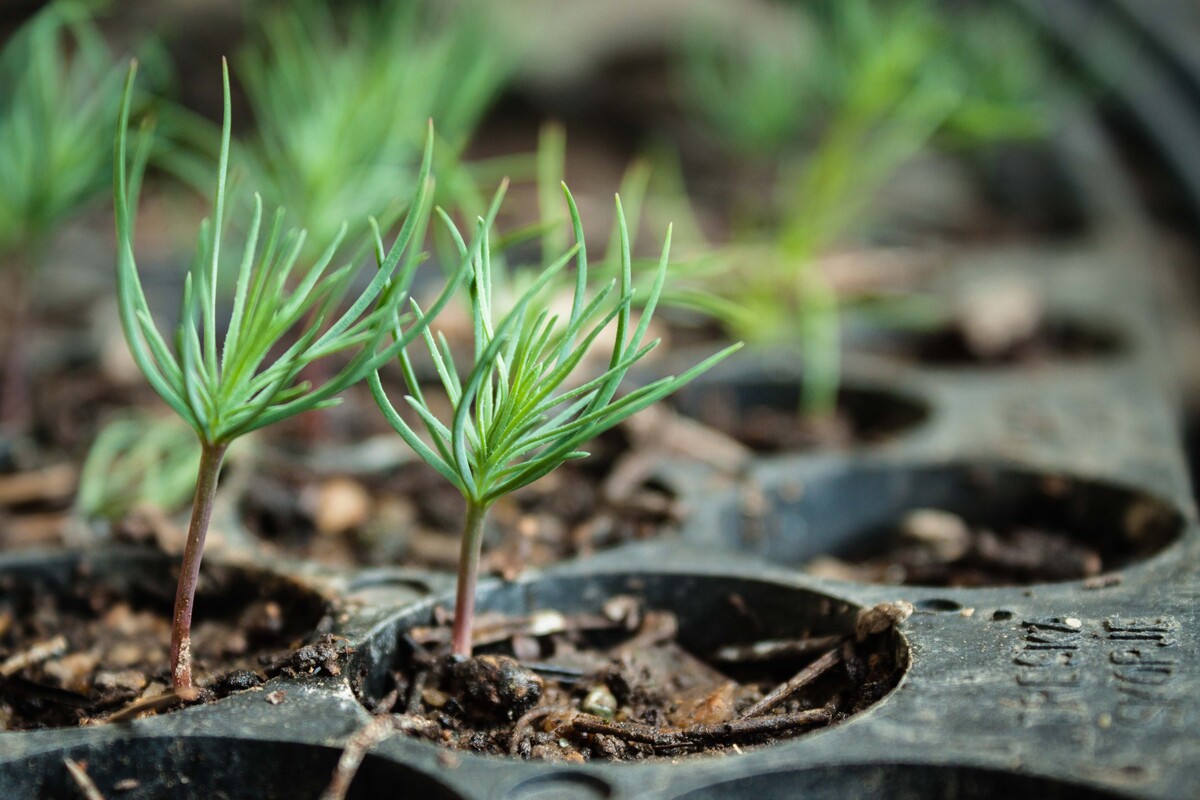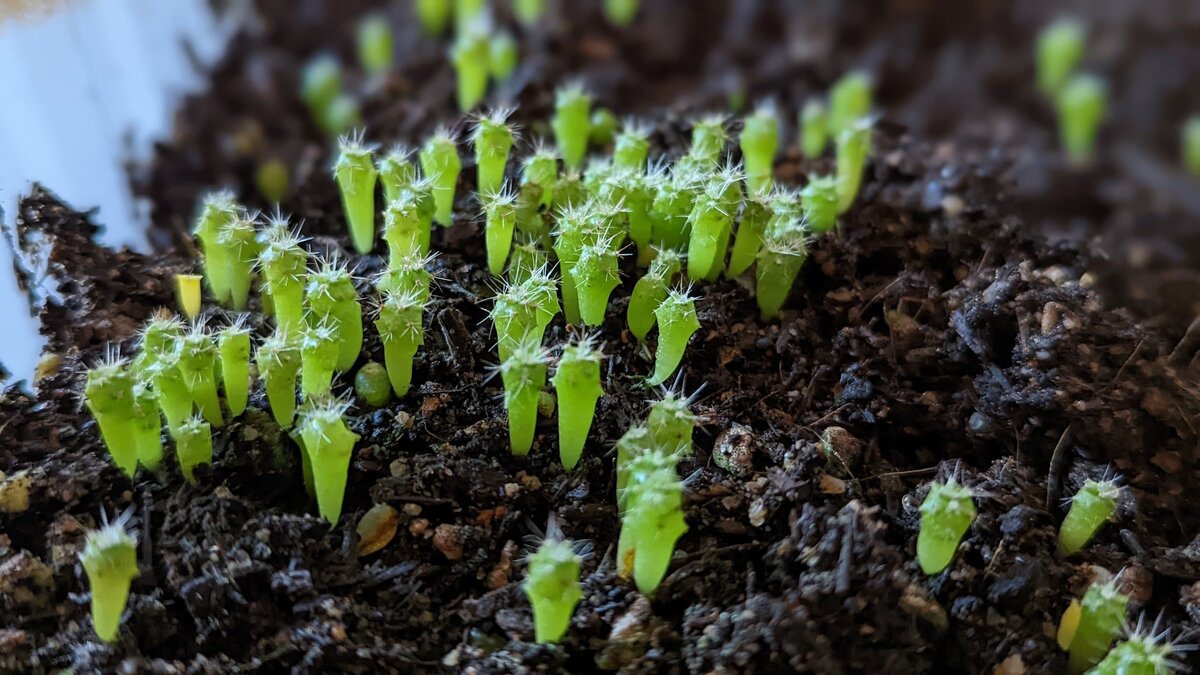Home>Types of Gardening>Ornamental Gardening>Can You Repot An Orchid When It’s Blooming


Ornamental Gardening
Can You Repot An Orchid When It’s Blooming
Published: January 10, 2024
Learn about repotting orchids while they're blooming and get tips for successful ornamental gardening. Discover the best practices for caring for orchids during their flowering stage.
(Many of the links in this article redirect to a specific reviewed product. Your purchase of these products through affiliate links helps to generate commission for Chicagolandgardening.com, at no extra cost. Learn more)
Table of Contents
Introduction
Welcome to the world of orchids! These exquisite plants have captivated the hearts of gardeners and plant enthusiasts around the globe for centuries. With their vibrant flowers and unique shapes, orchids bring an element of elegance and beauty to any garden or indoor space. However, caring for orchids requires special attention, and one important aspect of their maintenance is repotting.
Repotting is the process of transferring an orchid to a new pot with fresh growing medium. It allows the plant to establish a healthy root system and ensures optimal growth and blooming. Many orchid owners wonder if repotting is possible while the plant is in bloom. After all, no one wants to disrupt the exquisite display of flowers by disturbing the roots. In this article, we will explore the fascinating world of orchid repotting and answer the question, “Can you repot an orchid while it’s blooming?”
Before we dive into the answer, let’s take a moment to understand orchids and why repotting is crucial for their well-being.
Understanding Orchids
Orchids belong to the family Orchidaceae, which is one of the largest and most diverse plant families in the world. These stunning plants come in a wide range of colors, shapes, and sizes, making them a popular choice among gardeners and collectors. Orchids are known for their delicate and intricate flowers, which often have a long-lasting bloom period.
What makes orchids unique is their special way of obtaining nutrients and moisture. Unlike most plants that get their nutrients from the soil, orchids are epiphytes or lithophytes, which means they grow on other plants or rocks. They have aerial roots that absorb water and nutrients from the air. This adaptation allows orchids to thrive in diverse environments, from tropical rainforests to arid deserts.
Orchids require precise growing conditions to flourish. They need the right balance of light, humidity, air circulation, and moisture. In addition, they rely on a specific type of potting mix, which is usually a combination of organic and inorganic materials that allow for good drainage and sufficient aeration.
Over time, the potting mix can break down, become compacted, or accumulate salts and mineral deposits. This can hinder root growth and lead to poor plant health. Additionally, orchids may outgrow their current pots as they produce new pseudobulbs or increase in size. All these factors make repotting a vital aspect of orchid care.
Now that we have a better understanding of orchids, let’s explore why repotting is so important for their overall well-being.
The Importance of Repotting
Repotting is a vital part of orchid care, as it provides numerous benefits for the health and growth of the plant. Here are some reasons why repotting is important:
- Refreshes the Growing Medium: Over time, the potting mix used for orchids can break down, become compacted, and lose its ability to retain moisture and provide adequate drainage. Repotting allows you to replace the old potting mix with a fresh one, ensuring that the orchid has access to the right balance of water, air, and nutrients.
- Prevents Root Rot: Orchids are susceptible to root rot, which can occur when their roots are constantly sitting in a soggy or stagnant environment. By repotting, you can remove any damaged or decaying roots and provide the orchid with a healthier growing medium, reducing the risk of root rot.
- Stimulates New Growth: Repotting stimulates the orchid to produce new roots, which are essential for the plant’s overall health and ability to absorb water and nutrients. It also encourages the growth of new pseudobulbs or canes, which are where the orchid stores energy and produces flowers.
- Prevents Nutrient Build-up: Over time, mineral salts and other residues can accumulate in the potting mix, leading to a build-up of harmful ions that can affect the orchid’s ability to absorb nutrients. By repotting, you can flush out these excess salts and provide the orchid with a fresh start.
Regular repotting also allows you to assess the health of the orchid’s root system, identify any signs of pest infestation or disease, and address any issues before they become more serious. It gives you an opportunity to check for overcrowding, divide orchids that have outgrown their pots, and promote better air circulation around the roots.
Now that we understand the importance of repotting, let’s explore the factors to consider before repotting an orchid.
Factors to Consider
Before you embark on the journey of repotting your orchid, there are several factors to take into consideration. These factors will help ensure that the repotting process is successful and minimizes stress for your blooming orchid.
- Blooming Stage: It’s important to consider the stage of blooming that your orchid is in. If the flowers have just started to open or are in full bloom, it’s generally best to wait until the blooming cycle is done before repotting. This allows the plant to fully devote its energy to the blooming process, ensuring a longer and more vibrant display of flowers.
- Timing: Choose the right time of year to repot your orchid. Generally, it’s best to repot during the orchid’s active growth phase, which is typically in early spring or early fall. During this time, the plant is more resilient and can recover faster from the repotting process.
- Health of the Orchid: Consider the overall health of your orchid before repotting. If the orchid is struggling with issues such as root rot or pest infestation, it may be best to address those issues first before repotting. Repotting a weakened or stressed orchid can further exacerbate its condition, so it’s important to ensure the plant is in good health before proceeding.
- Pot Size: Evaluate the size of the current pot and the root system of your orchid. If the roots are overcrowded and spilling over the edge of the pot, or if the pot has become too small, it’s a clear indication that repotting is necessary. Orchids need space for their roots to grow properly and establish a healthy root system.
- Potting Mix: Consider the type of potting mix that is most suitable for your orchid species. Different orchids have different preferences when it comes to the potting mix. Some prefer a more airy mix, while others thrive in a finer medium. Research the specific needs of your orchid and choose the potting mix accordingly.
By taking these factors into account, you can ensure that you make an informed decision on when and how to proceed with repotting your blooming orchid. In the next section, we will address the question of whether it is possible to repot an orchid while it is blooming.
Can You Repot an Orchid While It’s Blooming?
One of the most common questions among orchid enthusiasts is whether it is possible to repot an orchid while it is blooming. The answer is both yes and no. While it is generally recommended to repot orchids after they have finished blooming, there are situations where repotting a blooming orchid may be necessary or unavoidable.
Repotting a blooming orchid can be a delicate process, as it carries the risk of damaging the flowers and disrupting the plant’s blooming cycle. However, if the orchid is in desperate need of repotting due to root issues, overcrowding, or disease, it may be necessary to proceed with repotting, even if it means sacrificing some blooms.
If you find yourself in a situation where repotting a blooming orchid is necessary, there are a few precautions you can take to minimize stress and maximize the chances of success:
- Choose the Right Time: Try to repot the orchid at the end of its blooming cycle, when most of the flowers have faded or fallen off. This allows the plant to naturally transition into its post-bloom phase and minimize any disruptions to the flowering process.
- Handle with Care: When handling a blooming orchid, be gentle and cautious. Avoid touching or damaging the flowers as much as possible. Use soft, clean tools and make clean cuts to avoid introducing any infections or diseases.
- Minimal Root Disruption: During repotting, carefully remove the orchid from its old pot and gently shake off the old potting mix. Try to disturb the roots as little as possible to minimize shock and preserve the plant’s stability.
- Provide Adequate Support: After repotting, ensure that the orchid is securely positioned in its new pot. Use stakes or orchid clips to provide support if needed, to prevent any drooping or damage to the flowers.
Remember, repotting a blooming orchid is not ideal but can be done in certain circumstances. If possible, it is always best to wait until the orchid has completed its blooming cycle before attempting to repot. This way, you can fully enjoy the flowers and minimize stress on the plant.
In the next section, we will provide you with a step-by-step guide on how to repot an orchid, which will be useful whether your orchid is blooming or not.
Step-by-Step Guide to Repotting an Orchid
Repotting an orchid may seem like a daunting task, but with the right technique and tools, it can be a straightforward process. Whether your orchid is blooming or not, here is a step-by-step guide to help you successfully repot your orchid:
- Prepare your materials: Gather all the necessary materials, including a clean and appropriately sized pot, fresh potting mix suitable for your orchid species, pruning shears or scissors, and any stakes or clips for support.
- Water the orchid: Water the orchid thoroughly a day or two before repotting. This will help hydrate the plant and make it easier to remove it from the pot without damaging the roots.
- Remove the orchid from the pot: Gently hold the base of the plant with one hand and tap the sides of the pot to loosen the root ball. Carefully remove the orchid from its current pot, being mindful not to damage the fragile roots.
- Inspect the roots: Take this opportunity to carefully examine the roots. Trim any dead, damaged, or mushy roots using clean pruning shears or scissors. Healthy roots should appear firm, green, or white.
- Clean the pot: Thoroughly clean the pot with warm water and mild soap. Rinse well to remove any residues that may interfere with root growth or harbor pests or diseases.
- Add fresh potting mix: Place a layer of fresh potting mix at the bottom of the new pot. Gently position the orchid in the center, making sure the roots are spread out evenly. Gradually add more potting mix, lightly pressing it around the roots to secure the plant.
- Provide support (if necessary): If your orchid needs support, insert stakes or attach clips to hold it in place. Be careful not to damage any flowers or delicate stems.
- Water and settle the orchid: After repotting, water the orchid thoroughly, allowing excess water to drain away. This helps settle the new potting mix and ensures that the roots make good contact with the new medium.
- Place in appropriate conditions: Find the ideal spot for your repotted orchid. Depending on the species, orchids thrive in different light levels ranging from bright indirect light to partial shade. Protect them from extreme temperature fluctuations, drafts, and direct sunlight.
- Monitor and care for your orchid: Keep a close eye on your repotted orchid in the weeks following repotting. Maintain a regular watering schedule and adjust your care routine as needed to provide the optimal conditions for your orchid’s growth and blooming.
Following these steps will help ensure a successful repotting experience for your orchid. Remember to take your time, be gentle with the plant, and prioritize its well-being. Now, let’s move on to some tips to consider when repotting a blooming orchid.
Tips for Repotting Blooming Orchids
Repotting a blooming orchid requires extra care and attention to ensure minimal stress to the plant and preserve its beautiful blooms. Here are some tips to consider when repotting a blooming orchid:
- Choose the right time: Whenever possible, wait until the orchid has finished blooming before repotting. This allows the plant to fully devote its energy to the flowering process without any disruptions.
- Be mindful of the flowers: Handle the orchid with extreme care to avoid damaging the flowers. Try not to touch or bump into them during the repotting process.
- Support the blooms: If the orchid has tall or delicate flower spikes, gently support them with stakes or clips to prevent bending or breakage during repotting.
- Minimize root disturbance: While repotting, be cautious not to excessively disturb the orchid’s roots. Preserve as much of the existing root system as possible to minimize stress on the plant.
- Use a well-draining potting mix: Ensure that the new potting mix provides good drainage while also retaining enough moisture for the orchid’s needs. A well-draining mix prevents waterlogged roots and promotes healthy growth.
- Water properly after repotting: After repotting, water the orchid thoroughly but avoid overwatering. Find the right balance to ensure the orchid receives enough hydration without creating excessive moisture around the roots.
- Monitor the orchid closely: Keep a close eye on the orchid in the weeks following repotting. Watch for any signs of stress, such as wilting or yellowing leaves. Adjust the care routine as needed to help the orchid recover successfully.
- Provide the optimal environment: After repotting, make sure the orchid is placed in a suitable location with appropriate lighting, temperature, and humidity. Maintain the ideal growing conditions to support the orchid’s overall health.
- Patience is key: It’s normal for a repotted orchid, especially a blooming one, to experience a temporary setback. Be patient and allow the plant some time to adjust to its new environment and recover from the repotting process.
By following these tips, you can minimize stress and maximize the chances of successfully repotting a blooming orchid. Remember that each orchid is unique, so adjust your approach based on the specific needs and characteristics of your plant. Now, let’s delve into some common mistakes to avoid when repotting orchids.
Common Mistakes to Avoid
When it comes to repotting orchids, there are some common mistakes that novice gardeners often make. Being aware of these pitfalls can help you avoid them and ensure a successful repotting process for your orchids. Here are some common mistakes to avoid:
- Using the wrong potting mix: One of the most common mistakes is using the wrong type of potting mix for your orchids. Different orchid species have different preferences in terms of the potting mix they require. It’s important to research and choose a mix that suits your specific orchid’s needs.
- Overcrowding the roots: Orchids need space for their roots to grow and breathe. Avoid overcrowding the roots in a small pot, as this can lead to root rot and hinder the orchid’s growth. Choose a pot that allows room for the roots to spread out comfortably.
- Overwatering or underwatering: Finding the right balance of watering can be challenging. Overwatering can lead to root rot, while underwatering can cause the orchid to become dehydrated. It’s important to gauge the moisture needs of your orchid and establish a consistent watering routine.
- Repotting at the wrong time: Timing is crucial when it comes to repotting orchids. Moving your orchid at the wrong time can disrupt its growth and blooming cycle. Understand the growth patterns of your orchid species and repot during its dormant or active growth phase, whenever possible.
- Not assessing the overall health of the orchid: Repotting a sick or weak orchid can further stress the plant and hinder its recovery. It’s important to assess the overall health of your orchid before repotting and address any existing issues before proceeding with the repotting process.
- Improper handling: Orchids are delicate plants, and improper handling can damage their flowers, leaves, or roots. Always handle the orchid with care and use clean tools to avoid introducing infections or diseases.
- Failing to provide proper post-repotting care: Repotting is just the first step, but providing proper post-repotting care is equally important. Ensure that the orchid is placed in the right environment with appropriate light, temperature, and humidity. Monitor its progress and adjust its care routine accordingly.
- Being impatient: It’s normal for orchids to experience a temporary setback after repotting. Avoid being impatient and expecting immediate results. Give your orchid time to acclimate to its new environment and recover from the repotting process.
By avoiding these common mistakes, you can increase the chances of a successful repotting experience for your orchids and promote their overall health and growth. Now that we’ve explored the potential pitfalls let’s wrap up with some concluding thoughts.
Conclusion
Repotting an orchid is a crucial aspect of its overall care and growth. While it is generally recommended to repot orchids after they have finished blooming, there are situations where repotting a blooming orchid may be necessary. However, it is essential to approach the process with caution and take steps to minimize stress on the plant and preserve its beautiful blooms.
Understanding orchids and their unique requirements is key to successful repotting. Orchids require the right balance of light, humidity, air circulation, and moisture. Repotting refreshes the growing medium, prevents root rot, stimulates new growth, and prevents nutrient build-up. By repotting your orchids at the appropriate time and using the correct techniques, you can help them thrive and bloom beautifully.
When repotting a blooming orchid, be mindful of the flowers, handle the plant with care, and provide support to delicate stems if needed. Take steps to minimize root disturbance and provide the orchid with a well-draining potting mix. Monitor the orchid closely after repotting, providing the optimal environment and adjusting care as needed. Remember that each orchid is unique, so adjust your repotting approach based on the specific needs of your plant.
Avoid common mistakes such as using the wrong potting mix, overcrowding the roots, overwatering or underwatering, repotting at the wrong time, and improper handling. By avoiding these pitfalls, you can ensure a successful repotting experience and promote the overall health and growth of your orchids.
With a little knowledge and careful attention, you can confidently repot your orchids and provide them with the best possible conditions for thriving and blooming. Enjoy the process of caring for these exquisite plants and witnessing their beauty unfold.
